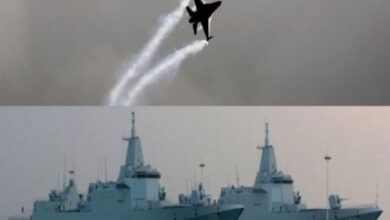India’s oil discount from Russia drops to $4, but transport costs are still unknown
The massive discounts on Russian crude oil that India gorged on since the Ukraine conflict have disappeared, but the transportation costs levied by Russia-arranged businesses continue to be ‘opaque’ and higher than usual, according to sources.
Three individuals with knowledge of the situation stated that although Russia invoices Indian refiners at a price slightly below the $60 per barrel price ceiling established by the West, it charges anywhere between $11 and $19 per barrel, or double the usual amount, for delivery from the Baltic and Black Sea to the west coast.
prices for similar distances, such a trip from the Persian Gulf to Rotterdam, are greater than the $11–19 per barrel transportation prices from Russian ports to India, some of which are on the 100+ tankers allegedly bought by Russian players for a shadow fleet.
Russian oil was sanctioned and avoided by European consumers as well as certain Asian consumers, such as Japan, in the wake of Moscow’s invasion of Ukraine in February of last year.
Due to this, Russian Urals oil was sold at a discount to Brent crude, the industry standard. However, sources said that the discount on Russian Urals grade has decreased from levels of almost $30 per barrel in the middle of last year to closer to $4 per barrel.
Indian refiners, who transform subsurface crude oil into finished goods like petrol and diesel, are now the top consumers of Russian oil since Chinese imports have reached their maximum owing to widespread car electrification and demand problems in an unstable economy.
To get the reduced oil, Indian refiners increased their purchases from less than 2% of their total imports before to the Ukraine War to 44%.
But as firms like government-controlled ones like Indian Oil Corporation (IOC), Hindustan Petroleum Corporation Ltd, Bharat Petroleum Corporation Ltd (BPCL), Mangalore Refinery and Petrochemicals Ltd, and HPCL-Mittal Energy Ltd, as well as private refiners Reliance Industries Ltd and Nayara Energy Ltd, continue to negotiate separate agreements with Russia, these discounts have been decreasing.
According to insiders, the savings might have been greater had state-controlled companies, which transport around 60% of the 2 million barrels of Russian oil that arrive in India every day, bargained together.
China’s demand has peaked, and Europe is not purchasing any Russian seaborne oil. India is the only country with a growing need, therefore. And if they (refiners) had bargained together, more savings may have been obtained, according to a source.
Take into account that IOC is the only business to have signed a term or set volume contract. Other refiners keep making purchases via tenders.
India was a small importer of Russian oil before Russia’s invasion of Ukraine in February of last year, with imports totaling roughly 44,500 barrels per day (bpd) in the 12 months leading up to February 2022.
China’s imports of Russian oil by sea from India overtook those of China a few months ago. According to sources, Russian crude oil is purchased by Indian refiners on a delivered basis, placing the responsibility for shipment and insurance on Moscow.
The transportation and insurance rates charged are based on quotations Russia receives from three unrecognised organisations, which they stated cannot be objectively reviewed and remain opaque, even when the oil is invoiced at or slightly below $60 per barrel.
According to them, the true selling price of Urals crude is about $70-75 per barrel, which directs a significant amount of Russian oil earnings to the three shadow organisations.
In an effort to restrict Moscow’s capacity to fund its conflict in Ukraine, the G7 set a $60 per barrel price restriction on Russian oil starting in December 2022.
The price limit required that oil be sold at or below the price cap level in order for coalition country-based businesses to continue offering marine services for oil transport. Historically, companies located in coalition nations have had a market share of around 90% for pertinent marine insurance goods and reinsurance.
Therefore, sources claimed, Russia invoices the purchasers for shipping and insurance based on bids it receives from the three agencies while pricing oil in the invoice at $60 or less.
Up until 2022, two standard indicators, TD6 and TD17, which served as benchmarks for shipping prices, were quoted by the Baltic Exchange, a clearinghouse for the London shipping sector.
However, as of late 2022, Russian crude is no longer traded in Rotterdam, Augusta, or Baltic Exchange, and the latter has discontinued listing TD17 and altered the TD6 indication. As a result, it may not always be relevant to Russian cargoes.
Additionally, additional tankers are reserved on a time charter basis, which also obscures the price of a single journey. There is a lack of data on the real costs as these tankers are not booked via Baltic Exchange shipping brokers, they said.
In May, 46.3 percent of Russian oil-loaded ships were insured in the EU, the G7, or Norway, down from 78 percent in February of the previous year. Additionally, these nations continue to provide tankers to transport Russian oil.
In May 2023, more than 28% of oil tankers moving Russian oil originated from the EU, G7, or Norway, a decrease from the 58 percent pre-war level. The percentage of tankers registered in the UAE is 37% (pre-war: 13.4%), and 12.3% are from China, including Hong Kong. Unknown is the source of the remaining 22%.







